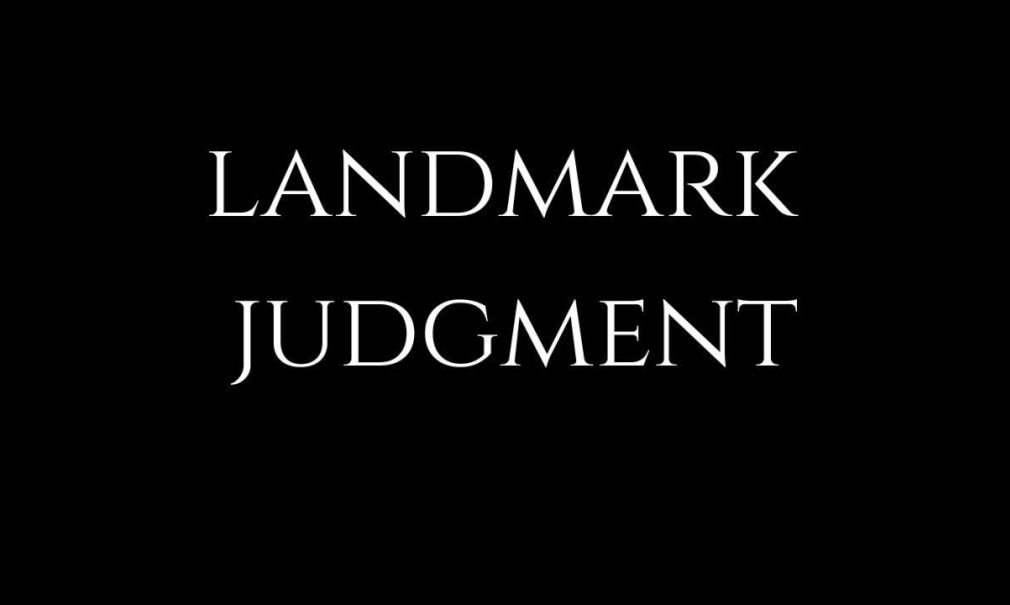Name: Assam Sanmilita Mahasangha & Ors. Vs Union of India & Ors.
Petitioner: Assam Sanmilita Mahasangha & Ors
Respondent: Union of India
Date of Judgement: December 17, 2014
Statute Referred:
- Constitution of India, 1949
- The Foreigners Act, 1946
- The Citizenship Act, 1995
- The Limitation Act, 1963
Facts:
- In the year of 1951 NRC complied exclusively for Assam, Assamese nationalist leaders feared a post-partition conspiracy by Pakistan to effect demographic change in state.
- Steady influx of migrants was observed in Assam during British rule between 1826 to 1947
- The British brought migrant workers to Assam from west Benal, Bihar, Jharkhand, Chhattisgarh, Odisha, Telangana, Andra Pradesh to work in tea plantation.
- However after 1951, NRC was never updated but when Steady influx of migrants in Assam was observed, the government decided to update NRC.
- Process undertaken as per provisions of The Citizenship Act, 1995 and The Citizenship (Registration of Citizens and issue of National Identity Cards) Rules, 2003.
- Eligibility for inclusion in updated NRC on the basis of NRC, 1951 and Electoral Rolls up to the midnight of 24th March, 1971.
- In the absence of Electoral Rolls the other documents have to submit like land and tenancy record, citizenship certificates and passports.
- In the case for applicant born after 1971, document pertaining to one’s ancestor can be submitted.
- There was illegal migrant determination by Tribunal Act 1983.
- IMDT Act only applicable to Assam.
- Enquiries were initiated in 310759 cases.
- Only 10015 person declared as illegal migrant and only 1481 illegal migrants physically expelled.
- After this the protest were stated in Assam.
- In 1985, Assam Accord was signed between the Government and leaders of Assam agitation. It brought the first amendment of the Citizenship Act and thereby Section 6A was inserted in the Act.
- To detect the illegal immigrants in the State of Assam, Parliament passed the Illegal Migrants (Determination by Tribunals) Act, 1983 (IMDT Act), two years before the Assam Accord.
- Under the Act the Government framed the Illegal Migrants (Determination by Tribunals) Rules, 1984 (IMDT Rules). The Act and the Rules taken together, made some departure from the procedure under Foreigners Act, 1946 and Foreigners (Tribunals) Order, 1964 which was applicable for whole India.
Issues involved:
- Whether Section 6A of Citizenship Act violates fundamental rights in that no mechanism is provided to determine which persons are ordinarily resident in Assam since the dates of their entry into Assam, thus granting deemed citizenship to such persons arbitrarily?
Contention of Petitioners:
- The petitioners argued that there is no rational basis for having separate cutoff dates for regularizing illegal migrants who enter Assam as anti to the rest of the country.
- In its petition, the Mahasangha argued that the provision infringe the right to life of the citizens in the state by uplift the “Massive influx of illegal migrants” from Bangladesh.
- It was also argued that the distinct mechanism compromised their right to culture as guaranteed by the Constitution.
- Cases referred The IMDT Act was challenged before the Supreme Court in Sarbananda Sonowal v UOI, since it made some departures from the Foreigners Act,1946 and Foreigner Tribunal Order, 1964.
- The IMDT Act reversed the burden of proof from individuals to State, made reference to tribunal more onerous, and indirectly made it harder to deport illegal immigrants.
- The Supreme Court brought down the IMDT Act and held it as unconstitutional. However, the large-scale illegal migration and political trouble continued.
Contention of Respondents:
- Respondents argued that Section 6A was inserted in the Act to detect the illegal immigrants in the State of Assam as there was Steady influx of illegal migrants in Assam from Bangladesh.
Judgement:
Supreme Court went on to hold that Article 355 of the Constitution had been violated, in as much as the Union had failed to safeguard the State of Assam against the external aggression and internal disturbance caused by the huge influx of illegal migrants from Bangladesh to Assam and went on to hold the 1983 Act to be violative of Article 14 of the Indian constitution as well.
As this Act was struck down, the Immigrants (Expulsion from Assam Act 1950) together with the Foreigners Act and the Foreigners Tribunal Order of 1964 were now to be the tools in the hands of Government to do the duty of detecting illegal migrants who were then to be expel.
Conclusion:
The 1983 Act and the rules made thereunder operated in the reverse direction that is instead of seeing that illegal migrants are expel, it did the contrasting by placing the burden of proof on the State to prove that a person happens to be an illegal migrant.
Drafted By: Sangeeta N, Presidency University, Bangalore
Edited By: Tanvi Mahajan, Publisher, Law Insider
Published On: February 23, 2022 at 21:15 IST

